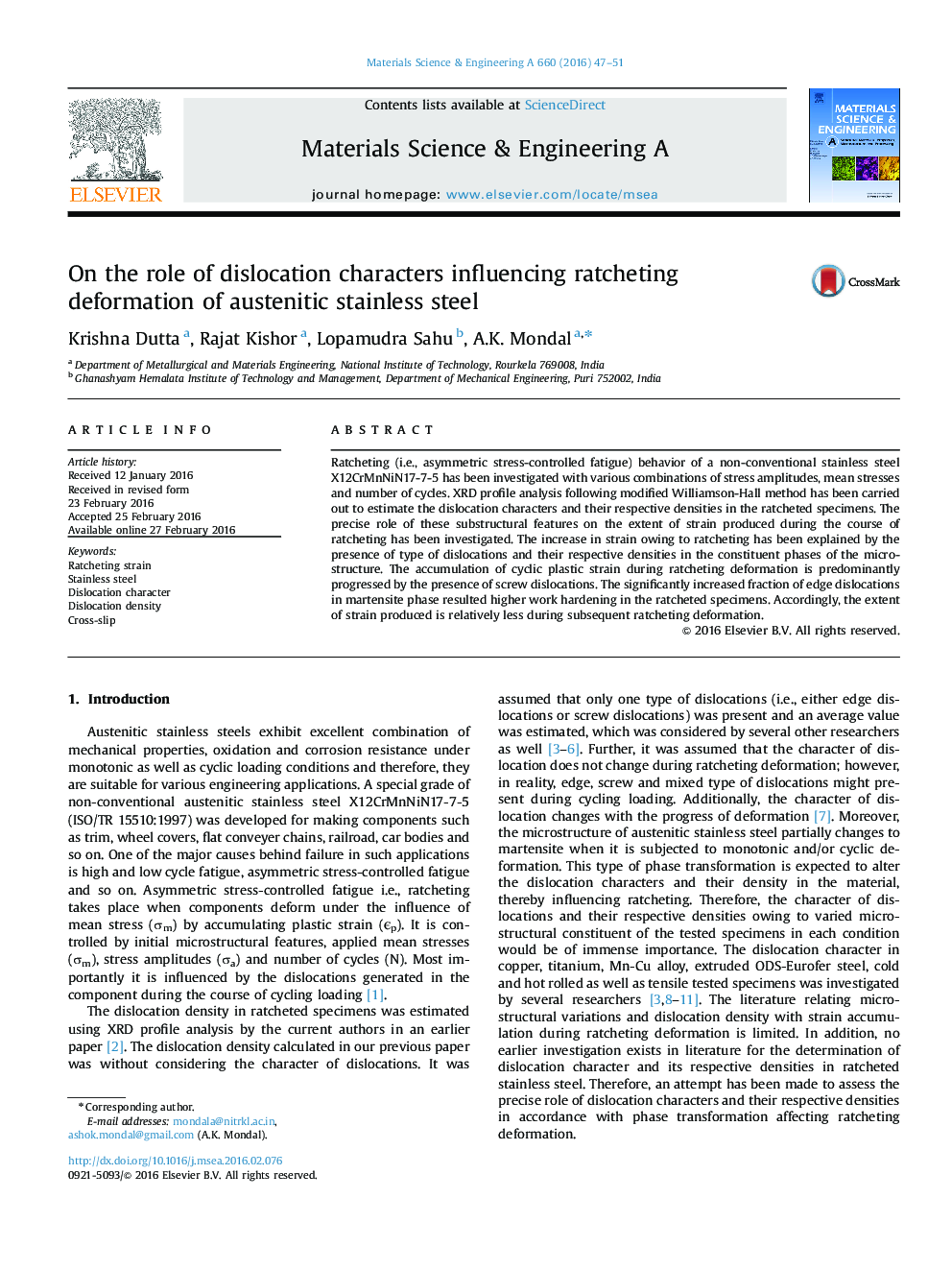| Article ID | Journal | Published Year | Pages | File Type |
|---|---|---|---|---|
| 1573252 | Materials Science and Engineering: A | 2016 | 5 Pages |
•First attempt to correlate ratcheting strain and character of dislocation by XRD.•Density of both edge and screw dislocations increases with ratcheting strain.•% Edge dislocation is more in ratcheted specimen as compared to screw dislocation.•Screw dislocation plays significant role in producing strain in ratcheting.
Ratcheting (i.e., asymmetric stress-controlled fatigue) behavior of a non-conventional stainless steel X12CrMnNiN17-7-5 has been investigated with various combinations of stress amplitudes, mean stresses and number of cycles. XRD profile analysis following modified Williamson-Hall method has been carried out to estimate the dislocation characters and their respective densities in the ratcheted specimens. The precise role of these substructural features on the extent of strain produced during the course of ratcheting has been investigated. The increase in strain owing to ratcheting has been explained by the presence of type of dislocations and their respective densities in the constituent phases of the microstructure. The accumulation of cyclic plastic strain during ratcheting deformation is predominantly progressed by the presence of screw dislocations. The significantly increased fraction of edge dislocations in martensite phase resulted higher work hardening in the ratcheted specimens. Accordingly, the extent of strain produced is relatively less during subsequent ratcheting deformation.
